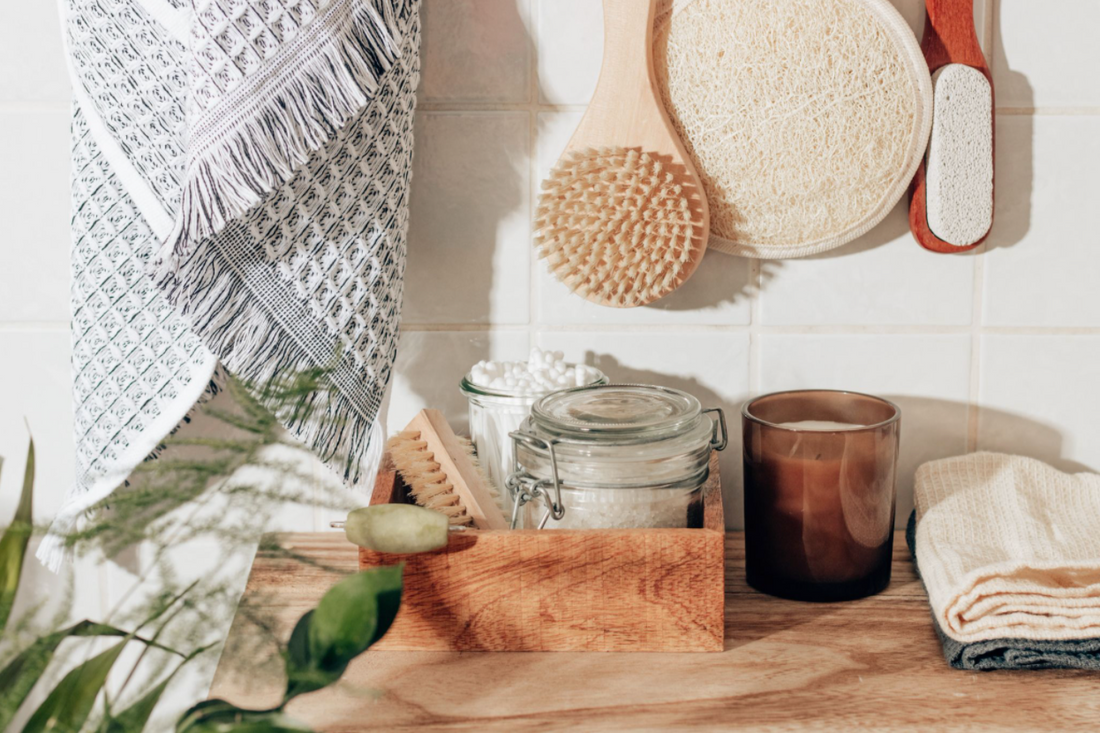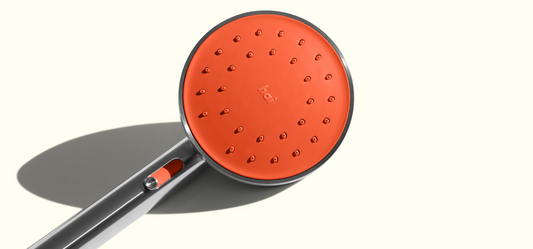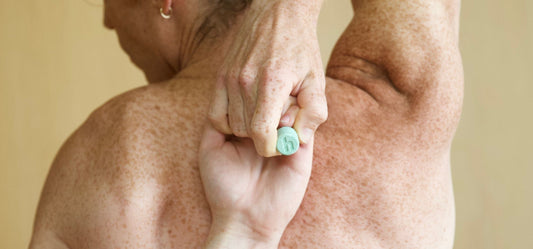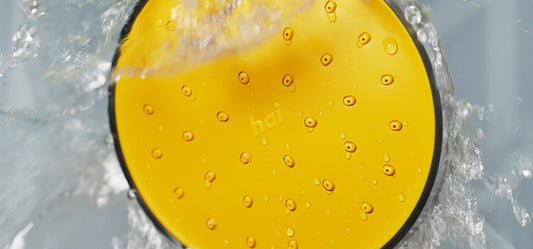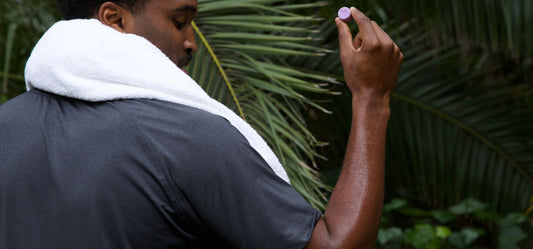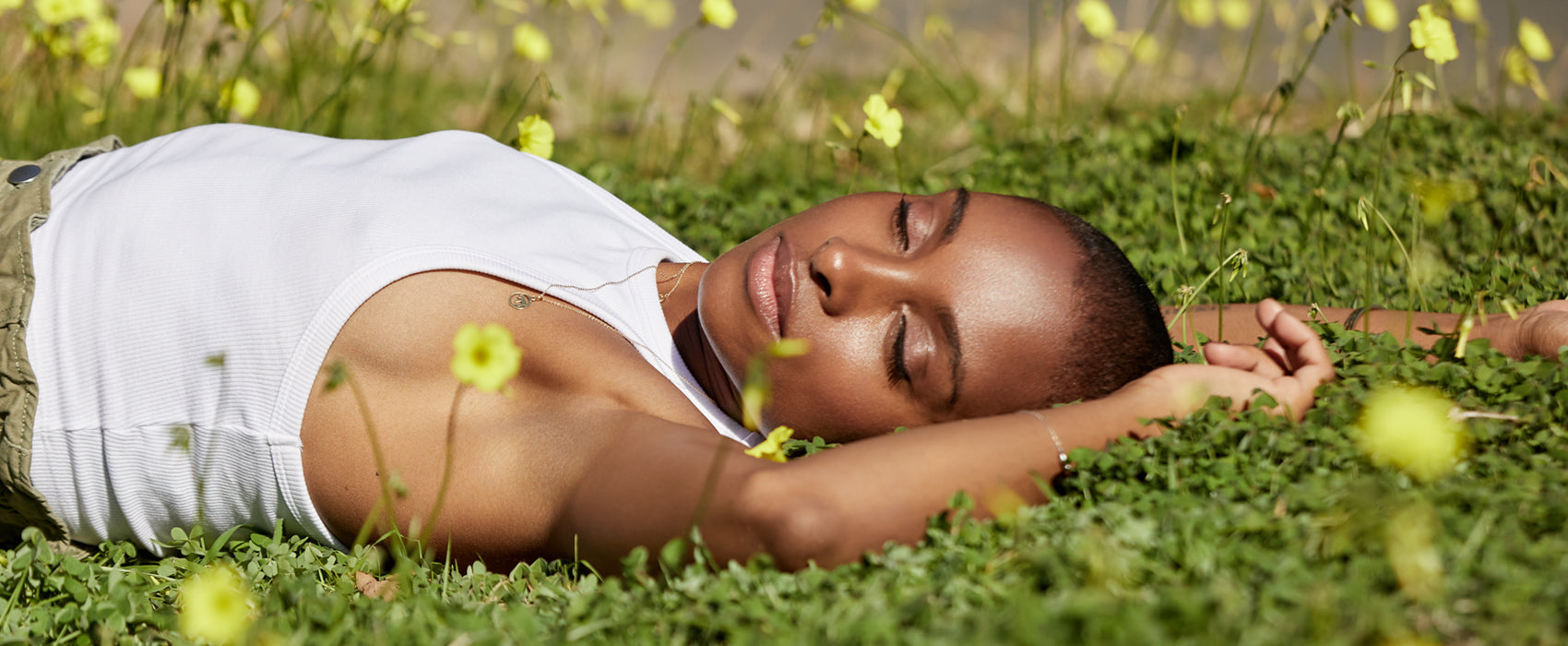How to Pick the Best Loofah for You: Our 5 Favorites
Loofah: fun to say, fun to use. A good shower loofah is a self-care power player that will transform your daily rinse from a humdrum checklist item into a luxurious spa experience—with loads of skin-boosting benefits. The right loofah can turn your body wash into a decadent foam, slough off dead skin cells, fight clogged pores, and improve blood circulation.
Choosing the best loofah for you comes down to your needs: Do you have sensitive skin and need a gentler scrubber? Will a handle help you access hard-to-reach spots? Is sustainability important to you? When it comes to finding your ideal shower sponge, there is no one-size-fits-all approach.
But with all the options available, how do you know which shower sponge is right for you and your skincare needs? Don't worry. We’ve got your back (and front, and sides). We’ve compiled a list of our favorite types of shower sponges—and the good, the bad, and the sudsy of each.

The Shower Brush
On the upside...
With their coarse bristles and long handles, brushes are particularly effective for full-body exfoliation, leaving behind smooth skin that's primed to absorb all the premium active ingredients in your favorite skincare products.
If your skin is on the sensitive side, a brush with silicone bristles can gently exfoliate dead skin without the risk of irritation. Natural bristles, like boar's hair, are best for a deep cleanse.
When selecting the perfect exfoliating body scrubber for you, we recommend looking for a brush with at least a 15-inch handle to help you reach all the poor, previously neglected parts of your back.
On the downside...
Because brushes have long handles, they can be difficult to maneuver in small showers or around tight spaces. Plus, because the bristles are often quite stiff, it's easy to accidentally scrub too hard—something that can lead to irritation, redness, and even rashes. They also won't generate the suds that other types of loofahs do. If you prefer lots of foamy lather, a brush might not be for you.
Brushes should be replaced after 3 to 6 months.

The Natural Loofah Sponge
On the upside...
Fruits and veggies aren't just good for eating. Eco-friendly natural loofahs are made from fibrous material found in some of your produce aisle favorites, like tropical fruits and members of the cucumber family.
These exfoliating sponges remove dead skin without disrupting the young and healthy cells underneath, revealing soft skin with a healthy glow. Unlike synthetic loofahs, they’re 100% biodegradable, so go ahead and throw them in the compost bin when you're done.
On the downside...
Natural loofahs may be too rough for folks with sensitive skin. If you have eczema, psoriasis, or any open wounds, it’s best to steer clear as natural loofahs can further irritate these conditions.
They also need a little more TLC than other types of sponges. After each use, rinse your loofah in cool water and allow it to air out.
Replace it every 3 to 4 weeks to prevent bacteria build-up.

The Sponge Pouf
On the upside...
If you're on the hunt for a soft loofah that provides a rich lather and gentle cleanse, sponge poufs are a great choice. Made of fine mesh that transforms soap or body wash into serious suds, poufs are easy on sensitive skin—with just enough texture to gently exfoliate and soften.
They're durable, affordable, and easily available at grocery stores, skincare shops, or online. Plus, they come in fun colors. You could even match yours to your hai smart showerhead. Just a thought.
On the downside...
Poufs are bacteria magnets and need to be replaced frequently—ideally, every month. Unfortunately, this type of bath sponge can't be recycled or composted, making it a less sustainable loofah option.

The Bath Mitt
On the upside...
Bath mitts slip right onto your hands, making them a great choice for a precision, hands-on clean. Plus, they come in a variety of materials, making for a more custom scrub. Try silicone mitts for gentle exfoliation of sensitive skin, cotton mitts to unclog pores, or soft terry cloth to build a lather. These exfoliating gloves are often machine-washable, a sustainability bonus.
On the downside...
Washing your back or other difficult-to-access spots with a mitt might require yogi-level flexibility. Mitts can also hold on to bacteria if they’re not properly cleaned, so be sure to machine wash them frequently.

The Back Scrubber
The Upside
Back scrubbers are designed to clean hard-to-reach areas like, ya know, your back. Not to be confused with body brushes, back scrubbers are a single long piece of fabric with handles on either end. Think of them like washcloths that got a major upgrade.
They are often two-sided, with a softer, sudsy side for more delicate skin and a grittier, scrubbier side for exfoliating tougher spots. Plus, they're often machine washable, making them hygienic and environmentally friendly.
On the downside...
Having additional length is great for accessing most parts of your body, but can make scrubbing smaller bits a little awkward. They need to be washed regularly to prevent bacteria buildup.
So, which is the best loofah for you? It depends on your needs and preferences. We hope this guide has helped you make an informed decision about the best type of sponge or brush to add to your shower routine.
FAQ
What is a loofah and what are its benefits?
This shower sponge gets its moniker from the luffa, a gourd-like plant in the cucumber family. Traditionally, loofahs were made by drying and hollowing them out, leaving behind a loose network of fibers perfect for sloughing away dead skin in the shower. Many modern iterations are made from other materials like cotton, nylon, or silicon.
No matter the material, all loofahs have some benefits in common: they scrub away dead skin cells, dirt, and oil that can clog pores. Loofah also helps improve circulation and leaves your skin feeling softer, smoother, and more even-toned.
Are loofahs good at sloughing away dead skin cells?
Absolutely. In fact, physical exfoliation is one of their main benefits. While skin naturally turns over cells every 28 days, factors like dry climates and stress can stall the process. Loofahs help your skin along, increasing cellular turnover by sloughing away dead skin cells, dirt, and oil that can clog pores. They also leave your skin feeling softer, smoother, and more even-toned.
How often should I replace my loofah?
This depends on the type of loofah you're using. For example, natural loofahs should be replaced every month, while other loofahs are machine-washable and will last for a long time, as long as they're properly cared for.
What is the best type of loofah for sensitive skin?
For sensitive skin, we recommend using a loofah made with silicone or soft cotton. These will exfoliate dead skin without the risk of irritation.
Can I use my loofah with body wash?
Yes. In fact, many loofahs work best with body wash or soap because they help create a rich lather. Just add a pea-sized amount of product to your loofah and rub it over wet skin in a circular motion. Avoid using too much pressure, which can irritate your skin.
What are the best ways to care for my loofah?
To care for your loofah, make sure to rinse it thoroughly after each use and hang it up to dry in a well-ventilated area.




